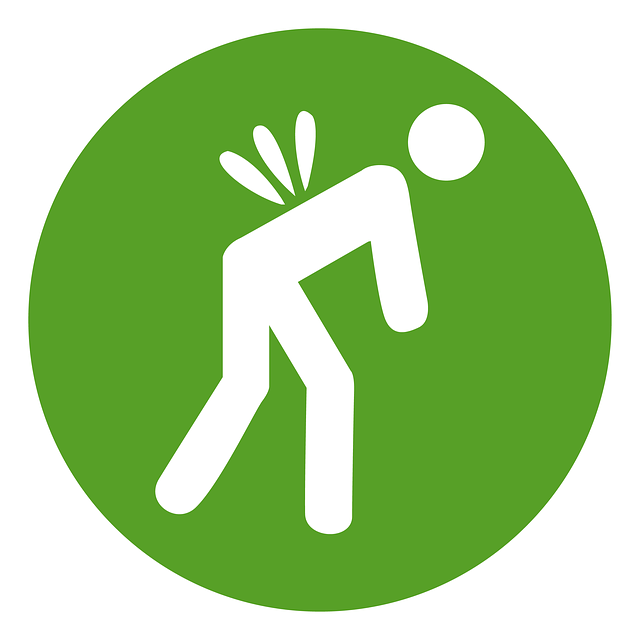Chronic pain, often caused by injuries or conditions like arthritis and fibromyalgia, significantly impacts daily life with limited treatment options. Traditional methods offer only temporary relief, prompting individuals to seek alternative solutions. Recovery through regenerative medicine introduces non-invasive techniques such as platelet-rich plasma (PRP) therapy and stem cell treatments, which show promise in alleviating chronic pain. These advanced therapies focus on repairing tissues, reducing inflammation, and addressing root causes without surgery or long-term medication, potentially revolutionizing pain management for arthritis, fibromyalgia, and nerve damage patients.
Chronic pain affects millions, profoundly impacting quality of life. Traditional treatments often come with side effects or invasive procedures. Thankfully, regenerative medicine offers promising non-invasive solutions for chronic pain management. This revolutionary approach harnesses the body’s natural healing mechanisms to achieve lasting relief. From stem cell therapy to platelet-rich plasma (PRP), this article explores recovery through regenerative medicine, delving into its mechanisms, benefits, and future potential.
- Understanding Chronic Pain and Its Impact
- The Rise of Regenerative Medicine for Non-Invasive Pain Relief
- Key Techniques in Regenerative Pain Management
- Benefits and Success Stories: Recovery Through Regenerative Medicine
- Navigating Treatment Options and Future Prospects
Understanding Chronic Pain and Its Impact

Chronic pain is a complex condition that significantly impacts an individual’s quality of life. It persists beyond the normal healing process and can be caused by various factors, including injuries, inflammation, or conditions like arthritis and fibromyalgia. Unlike acute pain, which serves as a warning signal, chronic pain continues long after the initial injury has healed, often leading to physical limitations and psychological distress. The impact extends beyond physical discomfort, affecting sleep patterns, mental health, and overall ability to perform daily tasks.
Regenerative medicine offers promising non-invasive solutions for managing chronic pain, focusing on restoring tissue function and promoting natural healing. By harnessing the body’s own regenerative capabilities, this approach aims to reduce inflammation, stimulate tissue repair, and improve mobility. Recovery through regenerative medicine involves techniques such as platelet-rich plasma (PRP) therapy and stem cell treatments, which have shown encouraging results in alleviating chronic pain associated with various conditions, providing individuals with effective alternatives to invasive procedures or long-term medication use.
The Rise of Regenerative Medicine for Non-Invasive Pain Relief

The field of regenerative medicine is rapidly emerging as a game-changer in the realm of non-invasive solutions for chronic pain management. This innovative approach leverages the body’s inherent ability to heal and regenerate itself, offering promising relief for patients seeking alternatives to traditional invasive treatments. By utilizing various therapeutic modalities, such as stem cell therapy, platelet-rich plasma (PRP), and tissue engineering, regenerative medicine aims to accelerate natural recovery processes.
The appeal of these non-invasive procedures lies in their ability to target the root causes of chronic pain while minimizing risks associated with surgery. For instance, PRP, a patient’s own blood enriched with growth factors, can stimulate tissue repair and reduce inflammation. Similarly, stem cell therapy has shown potential in regenerating damaged nerves and tissues, providing long-lasting pain relief for conditions like arthritis and fibromyalgia. As regenerative medicine continues to evolve, its impact on enhancing recovery through natural means holds significant promise for chronic pain sufferers, revolutionizing their journey towards a more comfortable and active lifestyle.
Key Techniques in Regenerative Pain Management

The field of regenerative pain management offers a promising avenue for those seeking non-invasive solutions to chronic pain. Key techniques in this innovative approach focus on stimulating the body’s natural healing processes, often using elements like growth factors, stem cells, and advanced tissue engineering. These methods aim to repair or regenerate damaged tissues, nerves, and muscles, providing lasting relief from chronic pain conditions.
One prominent technique is platelet-rich plasma (PRP) therapy, where a patient’s own blood is used to create a concentrated solution of healing components. This natural therapy accelerates the body’s recovery through regenerative medicine by promoting tissue repair and reducing inflammation. Other emerging methods include mesenchymal stem cell (MSC) treatments, which have shown potential in managing various chronic pain states by modulating immune responses and enhancing tissue regeneration.
Benefits and Success Stories: Recovery Through Regenerative Medicine

Regenerative medicine offers a promising avenue for chronic pain management, providing patients with non-invasive solutions that can lead to significant recovery and improved quality of life. This innovative approach leverages the body’s inherent ability to heal itself by stimulating the growth of new, healthy tissue. One of the key benefits is its minimal invasiveness; unlike traditional surgical interventions, regenerative treatments often involve injections or topical applications, reducing patient discomfort and recovery time.
Success stories abound, with many individuals experiencing relief from chronic pain conditions such as arthritis, fibromyalgia, and nerve damage after undergoing regenerative medicine therapies. For example, a study published in the Journal of Alternative and Complementary Medicine highlighted the positive outcomes of platelet-rich plasma (PRP) therapy for knee osteoarthritis, showing substantial improvements in pain and functionality among patients. These encouraging results reflect the potential of regenerative medicine to revolutionize chronic pain management, offering hope where conventional treatments may fall short.
Navigating Treatment Options and Future Prospects

Navigating the vast array of treatment options for chronic pain can be overwhelming, but it’s a crucial step towards achieving lasting relief. The good news is that beyond traditional pharmaceuticals and interventions, there’s a growing landscape of non-invasive solutions gaining traction, especially in the realm of regenerative medicine. This cutting-edge approach offers promising prospects for recovery by stimulating the body’s inherent healing capabilities.
Future advancements in regenerative therapies hold immense potential, with research continuously exploring new avenues to target specific pain triggers and mechanisms. As our understanding of chronic pain deepens, we can anticipate more personalized and effective treatments, paving the way for improved quality of life for those affected by this complex condition.
Chronic pain is a complex challenge, but regenerative medicine offers promising non-invasive solutions. By harnessing the body’s natural healing processes, techniques like platelet-rich plasma (PRP) and stem cell therapy provide targeted relief without the risks associated with surgery. The success stories highlighted in this article underscore the potential of regenerative medicine for achieving lasting recovery. As research advances, these innovative approaches hold greater promise for navigating and ultimately overcoming chronic pain, offering hope for a more vibrant and pain-free future.
